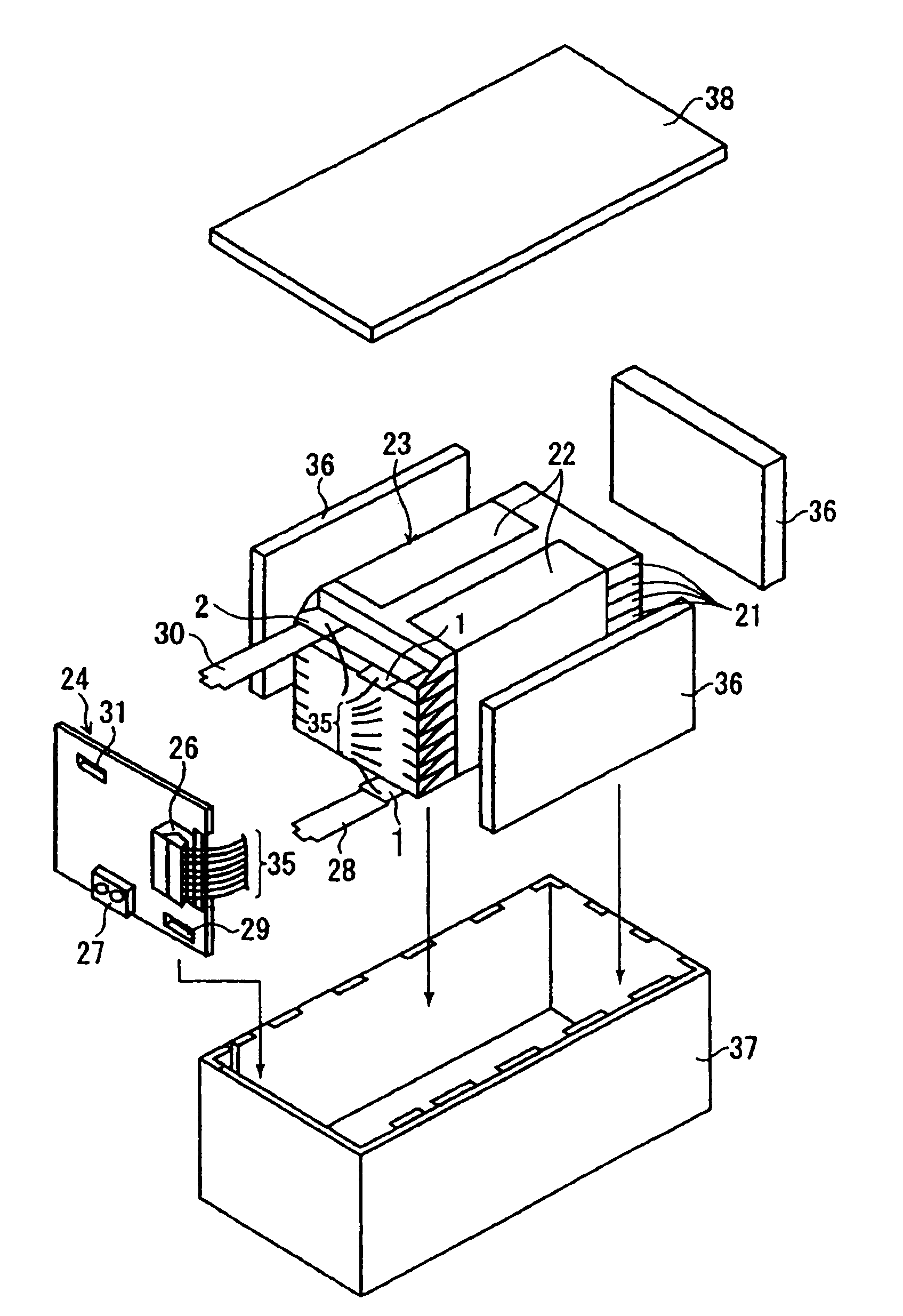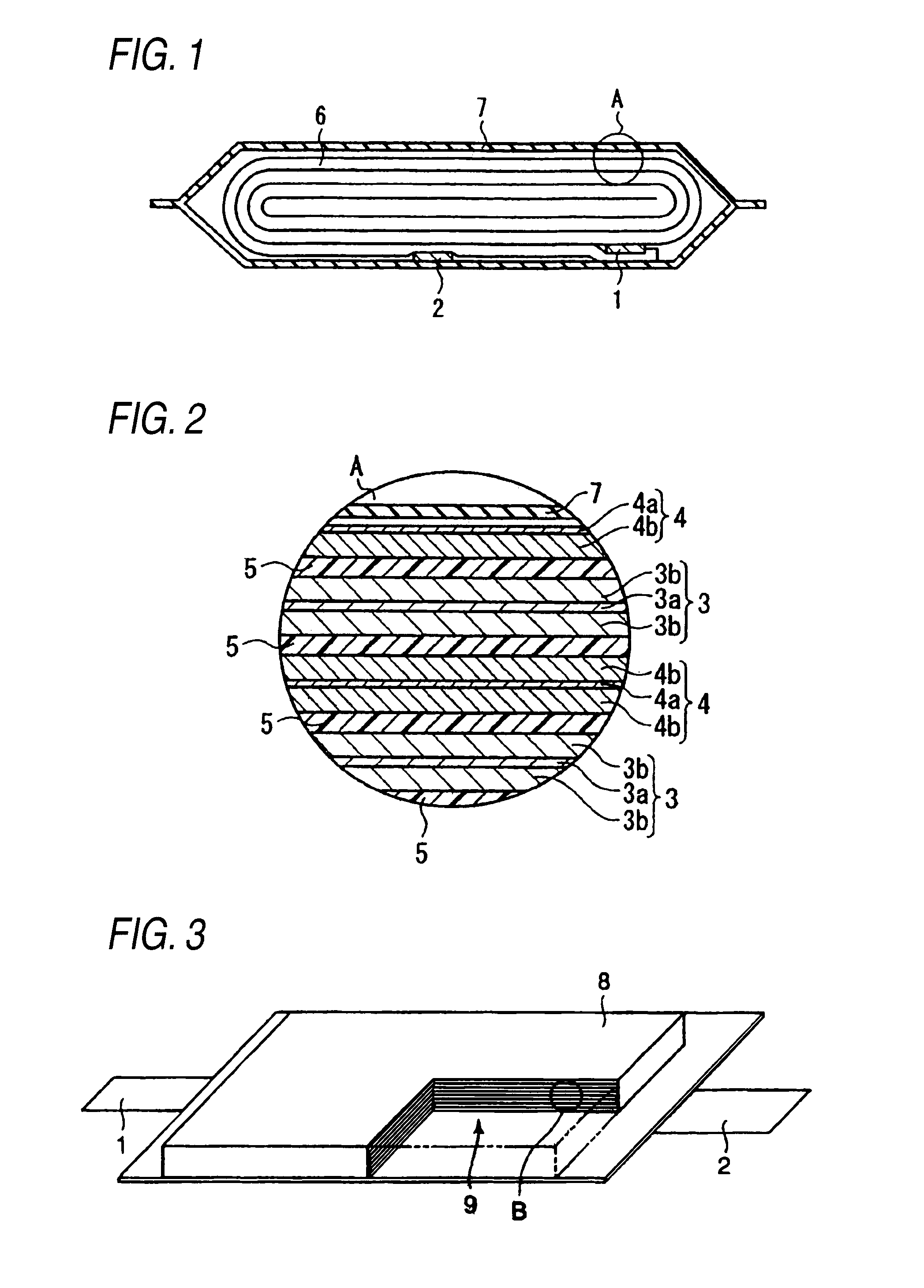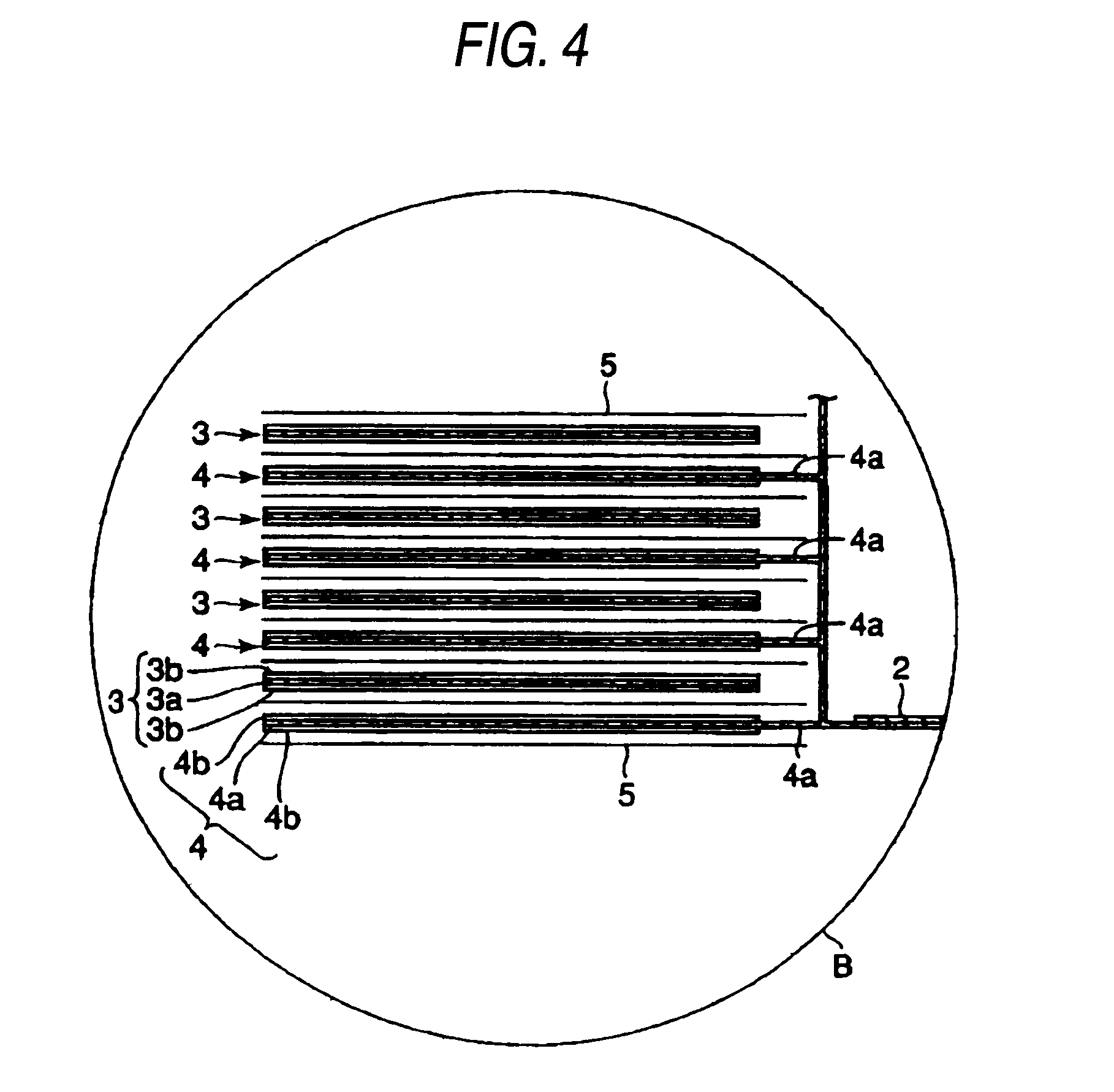Nonaqueous-electrolyte battery and battery pack
a technology of electrolyte battery and non-aqueous electrolyte, which is applied in the direction of batteries, non-aqueous electrolyte cells, cell components, etc., can solve the problems of lithium-titanium composite oxide negative active material batteries that suffer a large amount of self-discharge during storage, and achieve intact charge/discharge cycle performance and reduce self-discharge
- Summary
- Abstract
- Description
- Claims
- Application Information
AI Technical Summary
Benefits of technology
Problems solved by technology
Method used
Image
Examples
example 1
[0123]
[0124]To N-methylpyrrolidone (NMP) were added 90% by weight lithium-nickel-cobalt-manganese oxide (LiNi1 / 3Co1 / 3Mn1 / 3O2) powder as a positive active material, 5% by weight acetylene black as a conductive material, and 5% by weight poly(vinylidene fluoride) (PVdF). The ingredients were mixed together to prepare a slurry. This slurry was applied to each side of a current collector which was an aluminum foil having a thickness of 15 μm. The slurry applied was dried, and the coated foil was pressed to thereby produce a positive electrode having an electrode density of 3.2 g / cm3.
[0125]
[0126]A spinel lithium titanate (Li4Ti5O12) powder having an average particle diameter of 0.8 μm, BET specific surface area as determined through N2 adsorption of 10 m2 / g, and lithium insertion potential of 1.55 V (vs. Li / Li+) was prepared as a negative active material. A lithium fluoride powder was further prepared which had an average particle diameter of 3 μm and a BET specific surface area as deter...
example 8
[0135]A nonaqueous-electrolyte secondary battery was produced in the same manner as in Example 1, except that lithium sulfide was added in place of the lithium fluoride in the amount shown in Table 1.
example 9
[0136]A nonaqueous-electrolyte secondary battery was produced in the same manner as in Example 1, except that lithium carbonate was added in place of the lithium fluoride in the amount shown in Table 1.
PUM
| Property | Measurement | Unit |
|---|---|---|
| BET specific surface area | aaaaa | aaaaa |
| particle diameter | aaaaa | aaaaa |
| specific surface area | aaaaa | aaaaa |
Abstract
Description
Claims
Application Information
 Login to View More
Login to View More - R&D
- Intellectual Property
- Life Sciences
- Materials
- Tech Scout
- Unparalleled Data Quality
- Higher Quality Content
- 60% Fewer Hallucinations
Browse by: Latest US Patents, China's latest patents, Technical Efficacy Thesaurus, Application Domain, Technology Topic, Popular Technical Reports.
© 2025 PatSnap. All rights reserved.Legal|Privacy policy|Modern Slavery Act Transparency Statement|Sitemap|About US| Contact US: help@patsnap.com



